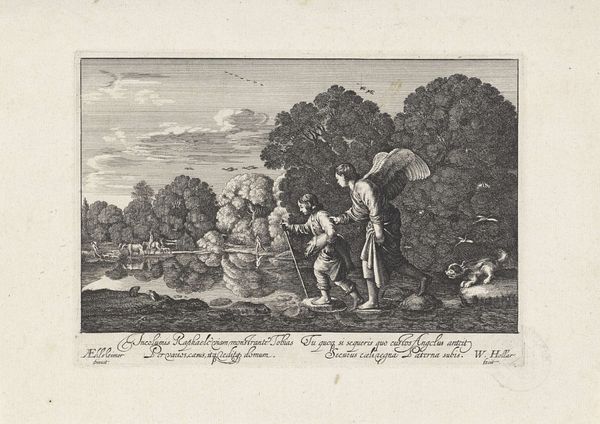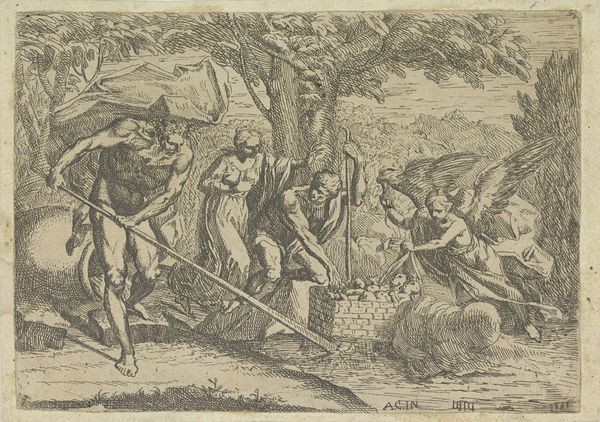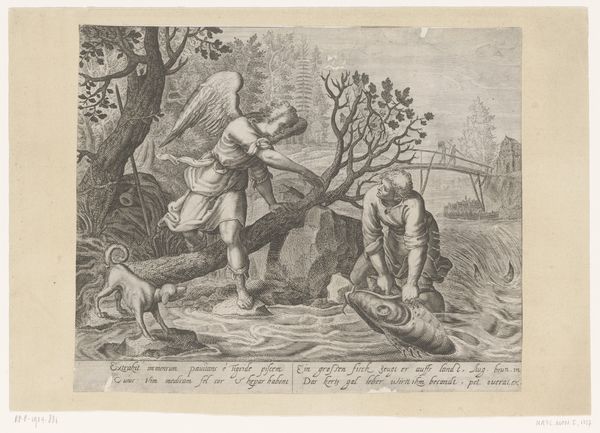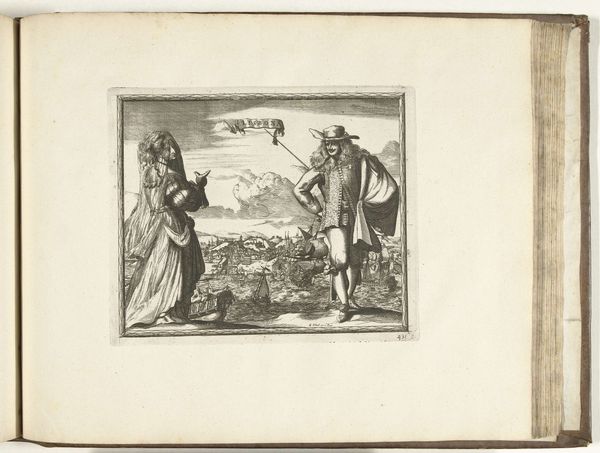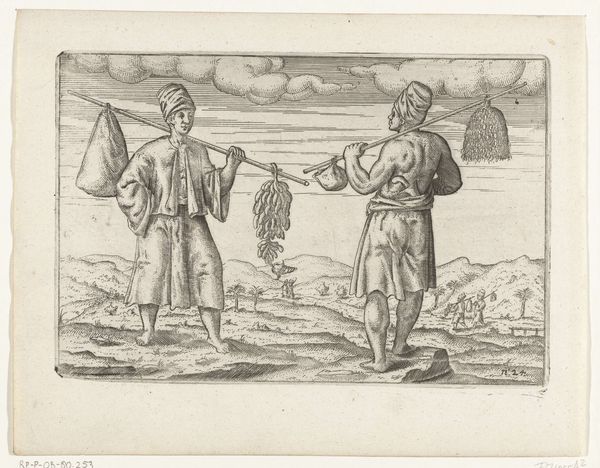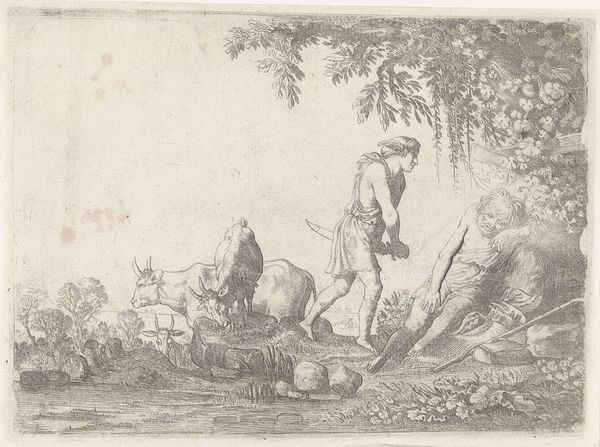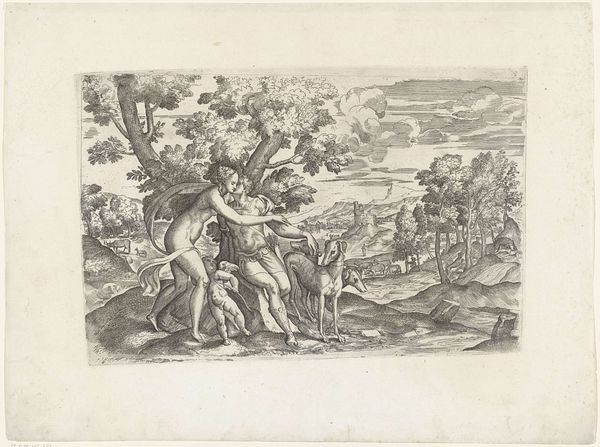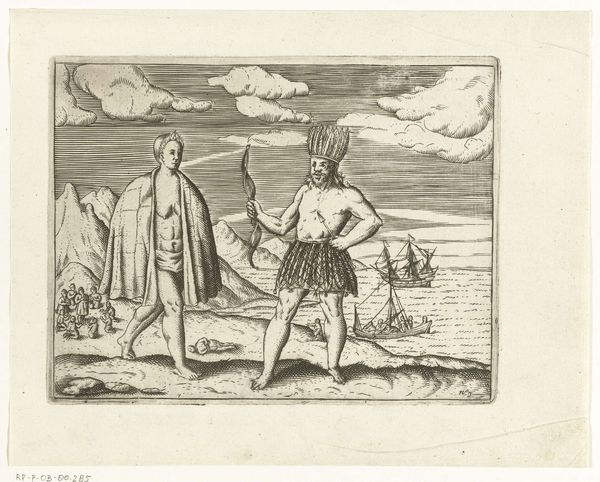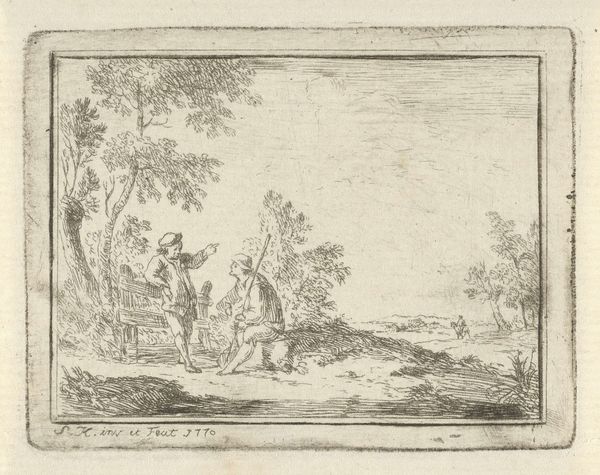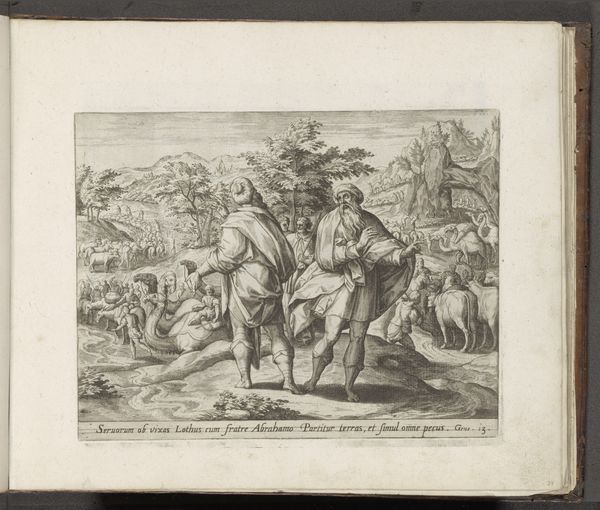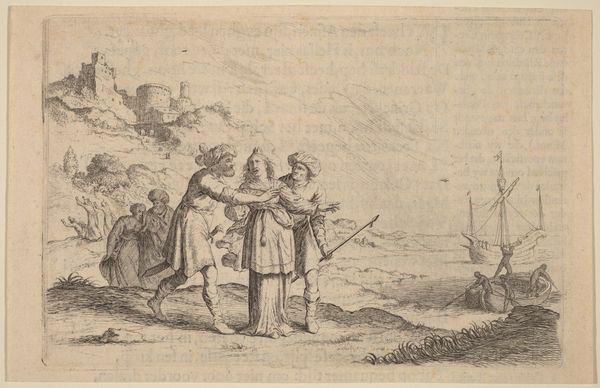
print, engraving
#
narrative-art
# print
#
old engraving style
#
line
#
engraving
Dimensions: height 145 mm, width 225 mm
Copyright: Rijks Museum: Open Domain
Curator: This engraving, titled "Bewoners van het eiland Mocha in Chili, 1600" or "Inhabitants of Mocha Island, Chile, 1600," dates from between 1601 and 1646, part of the Rijksmuseum collection. It is by an anonymous artist, using the technique of engraving to create the image. Editor: It strikes me as unsettlingly calm, despite the tension of the moment. The figures seem posed, almost like ethnographic specimens. The landscape is sparse, offering little context or depth beyond a stage for these individuals. Curator: The artist is providing an early modern European interpretation of Indigenous peoples, contributing to the visual vocabulary that framed these encounters for centuries. Note the way the individuals are presented: their clothing, tools, and gestures. Editor: The artist clearly presents their bodies as an object of scrutiny, almost stripping them bare. It is as if to convey a sort of essential understanding, free from the obscuring elements of civilization. This "essential understanding" feels… very projected, through the European lens, rather than any faithful depiction. Curator: Precisely. It is imperative to ask about the circumstances of its creation, of course. How did these images circulate, who consumed them, and what ideological work did they perform in justifying colonization? Editor: The stark lines of the engraving certainly emphasize that gaze. There's a clarity, or perhaps, a claim to clarity, that serves a specific purpose. These depictions supported power structures by presenting the colonizer as knower and the colonized as the known. Curator: It highlights the public role of art. Such imagery disseminated and codified notions of the "other," and legitimized colonial agendas. It serves as a visual record, but also a cautionary tale about representation and power. Editor: Seeing the subjects in this way definitely leaves a deep impact, reminding one that imagery created in a specific moment in history may continue to influence our perspectives today. Curator: This print reminds us that depictions always involve choices, reflecting societal biases and political motivations.
Comments
No comments
Be the first to comment and join the conversation on the ultimate creative platform.

